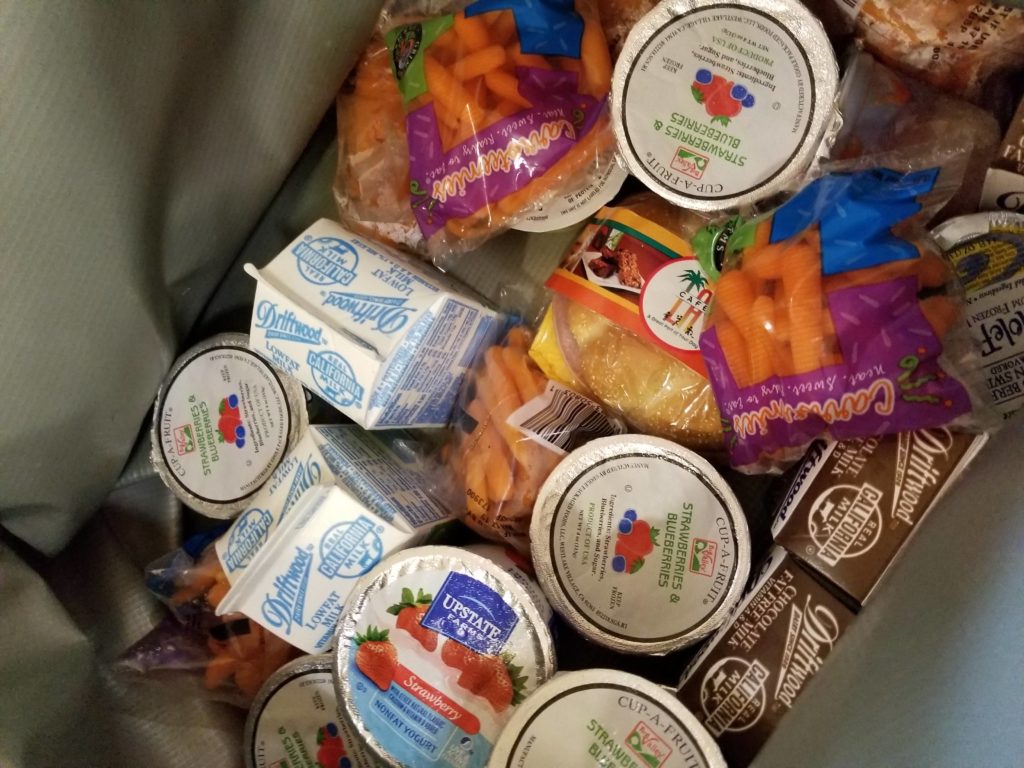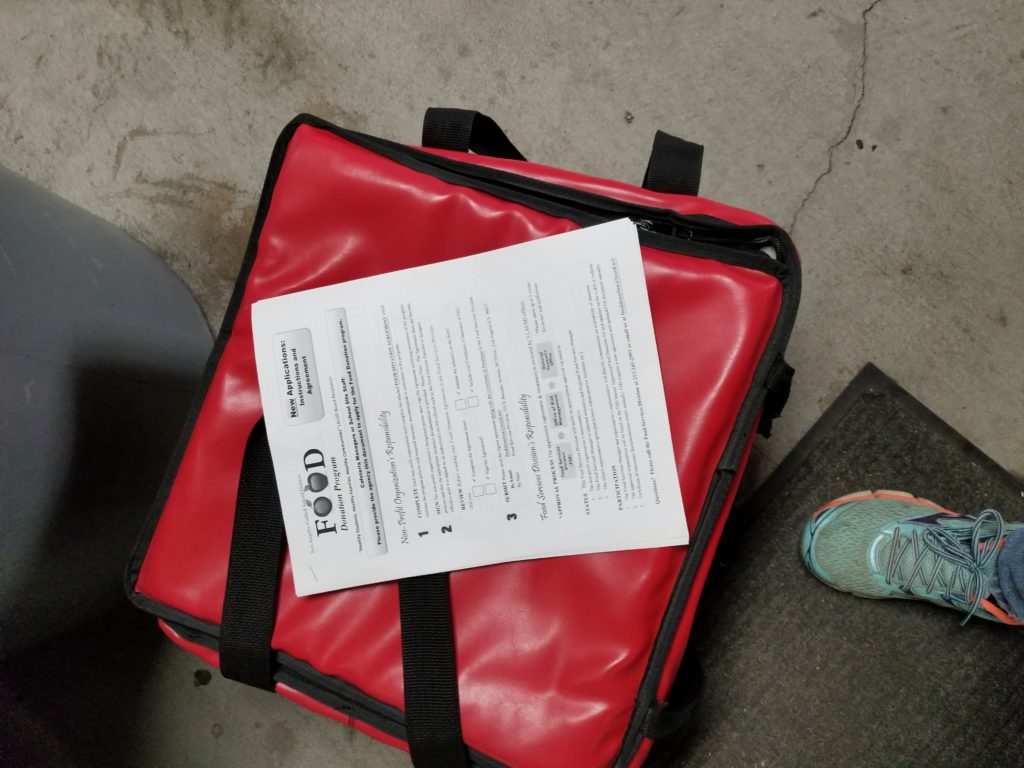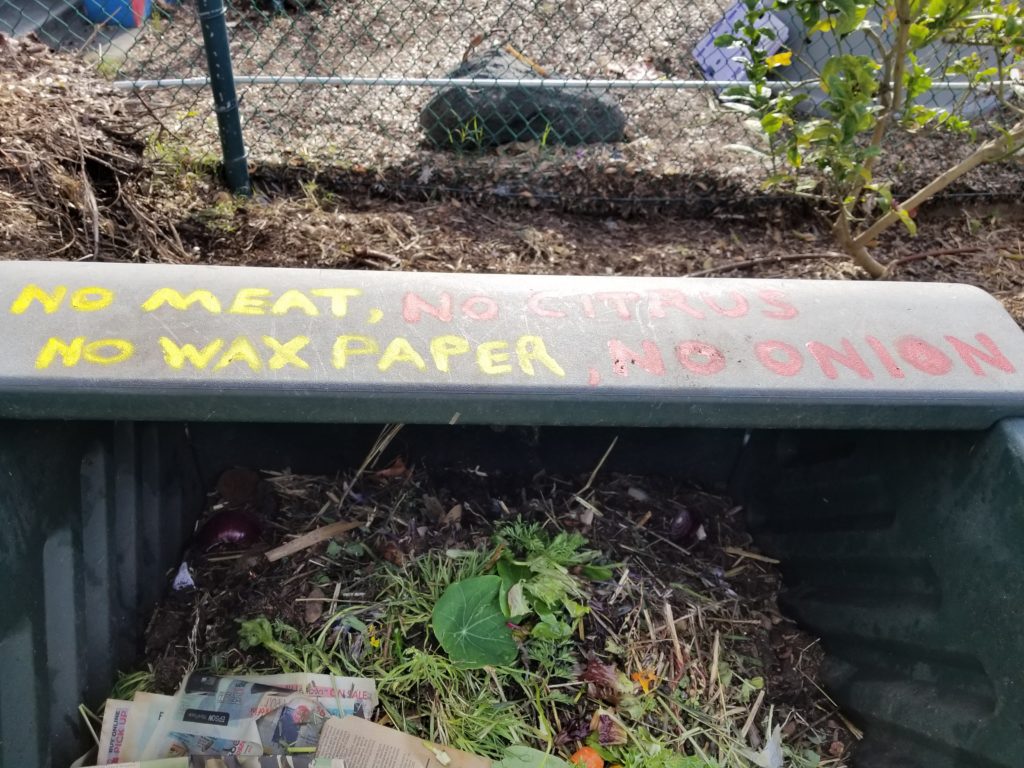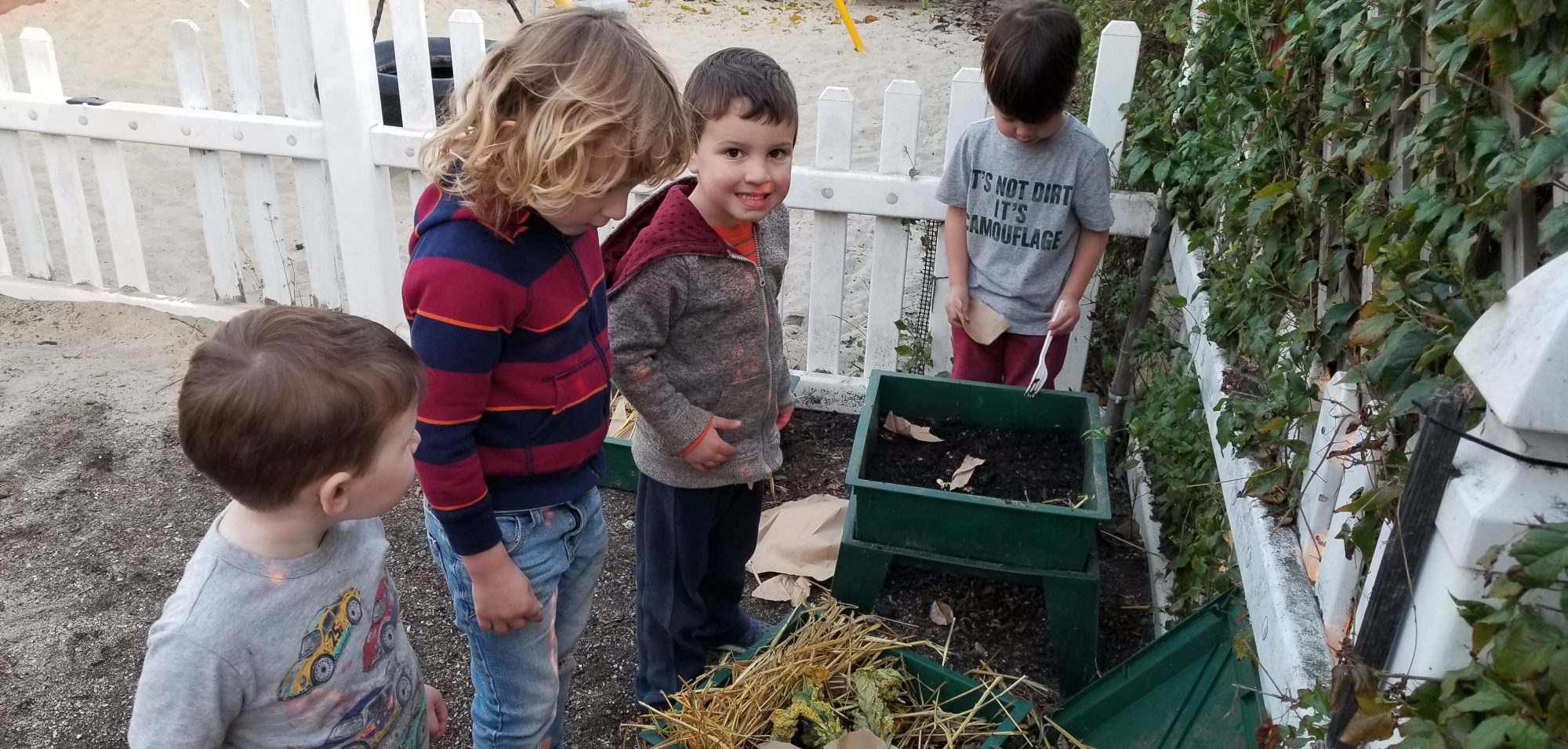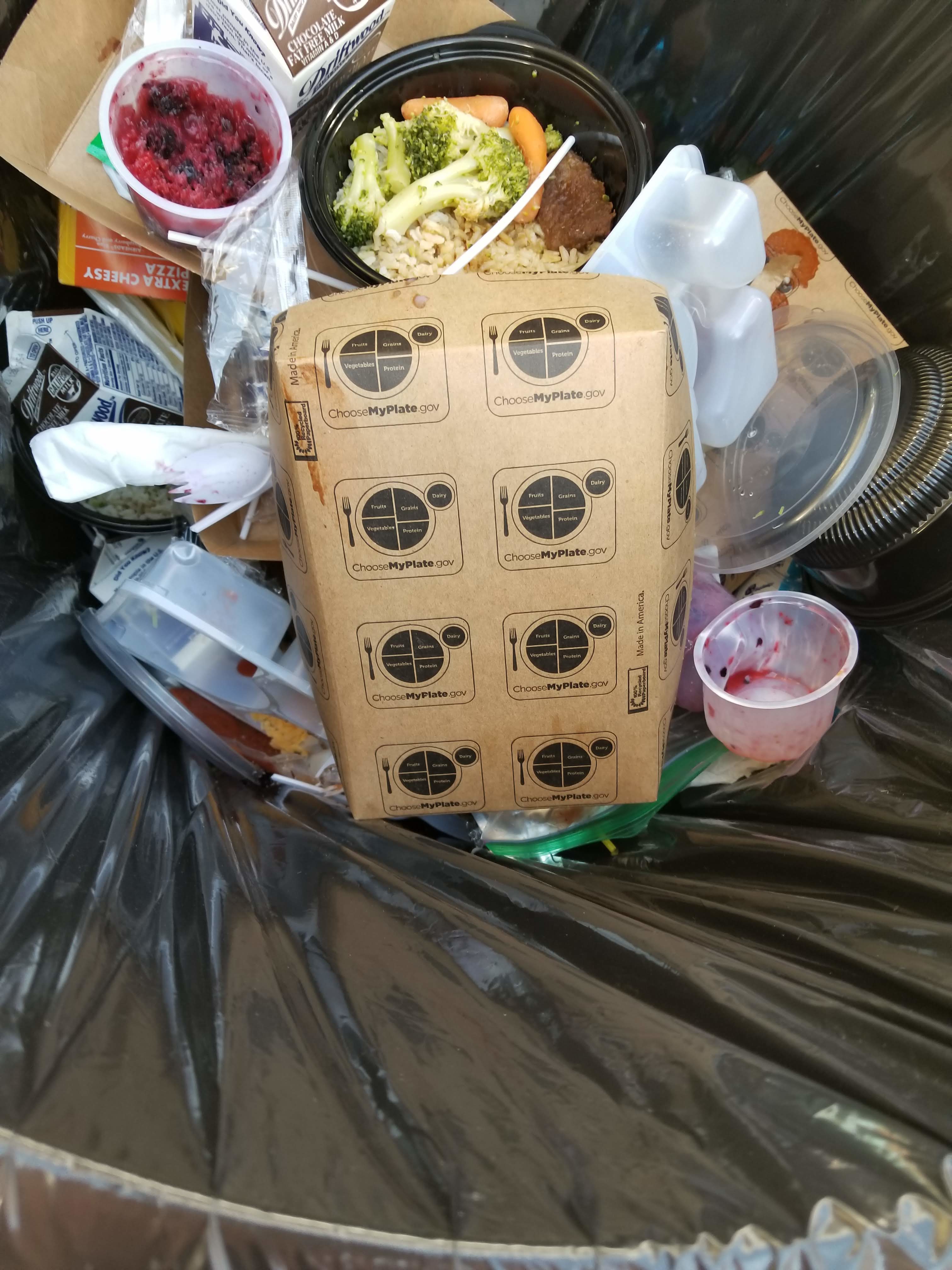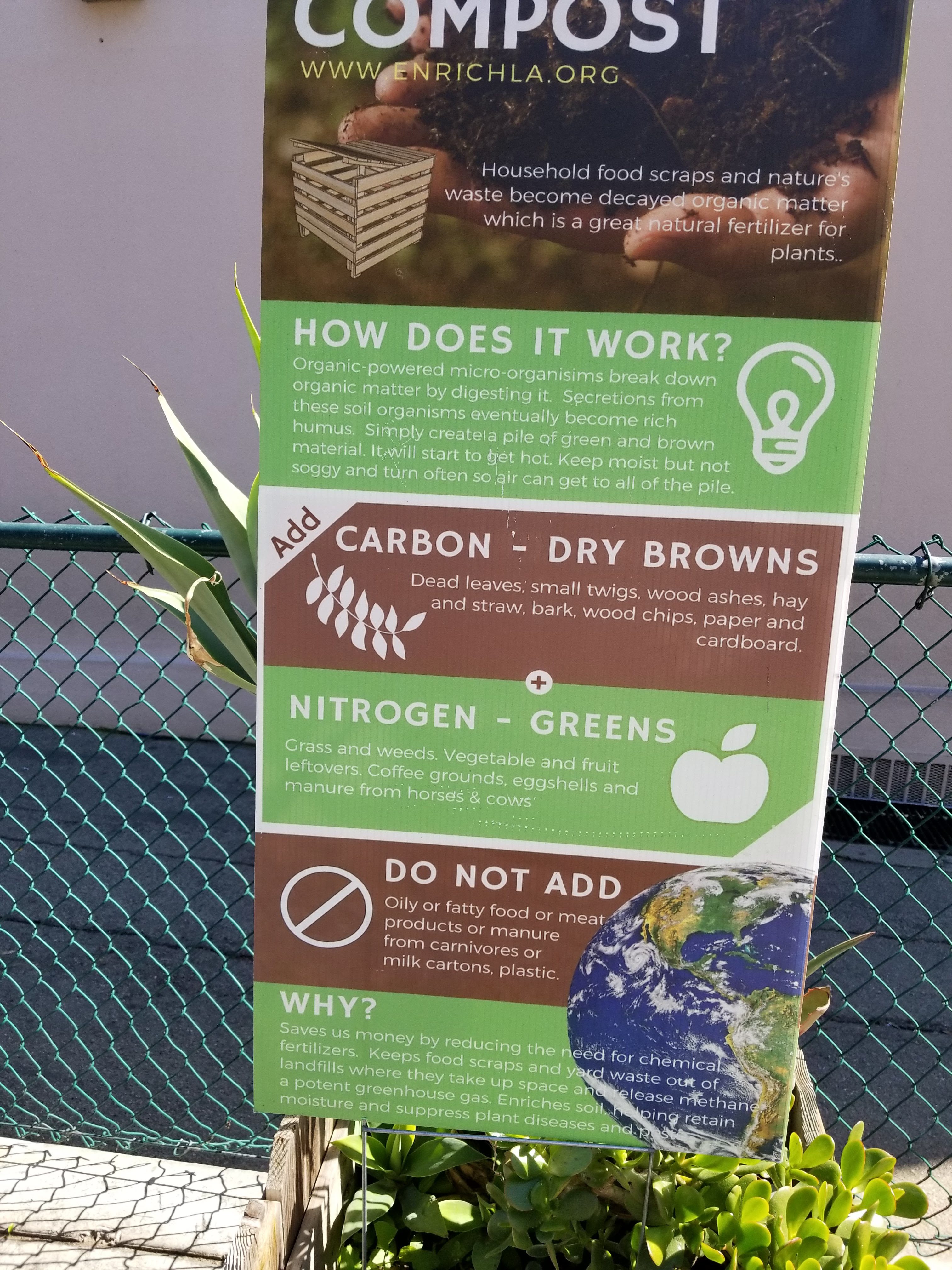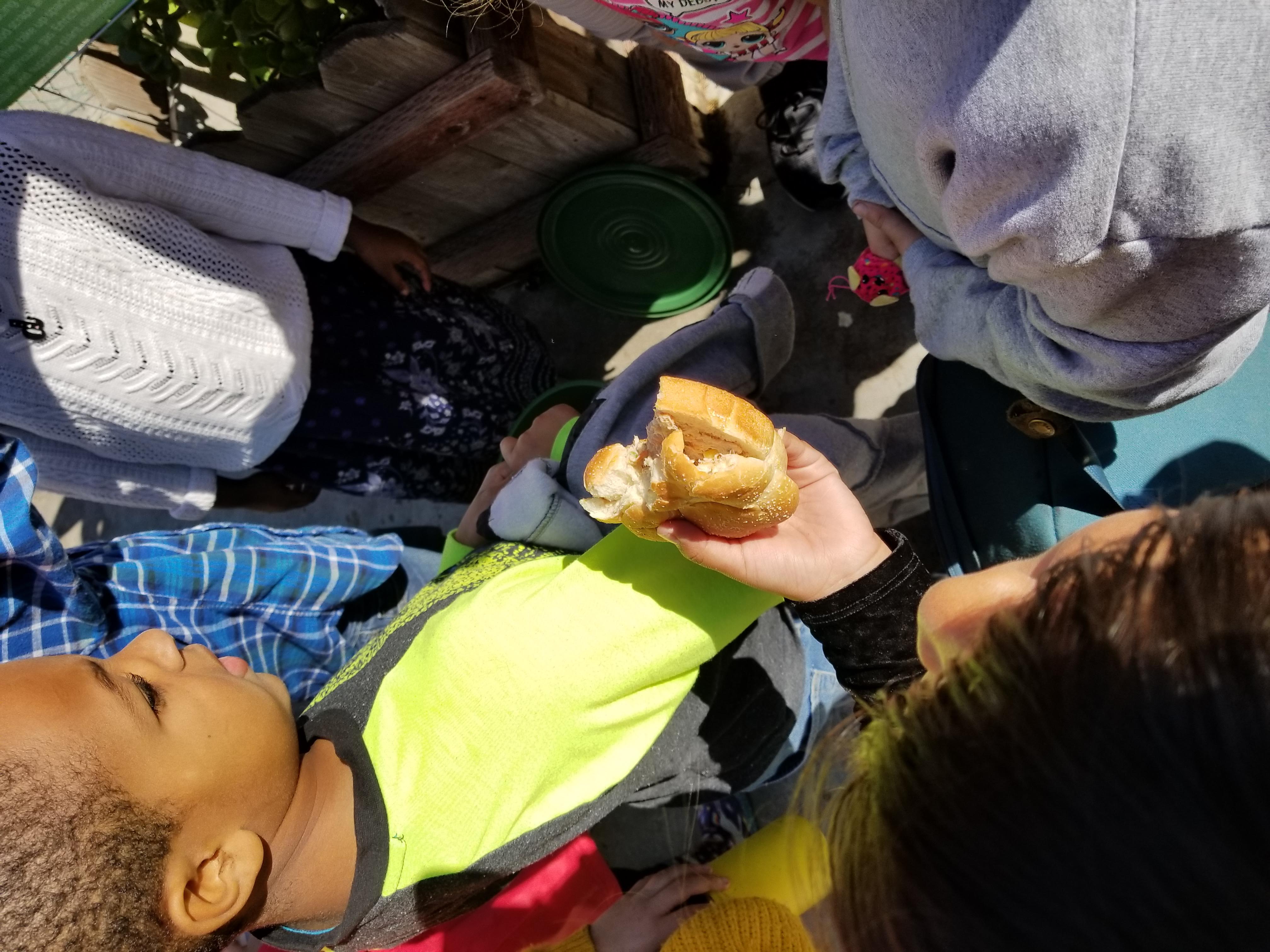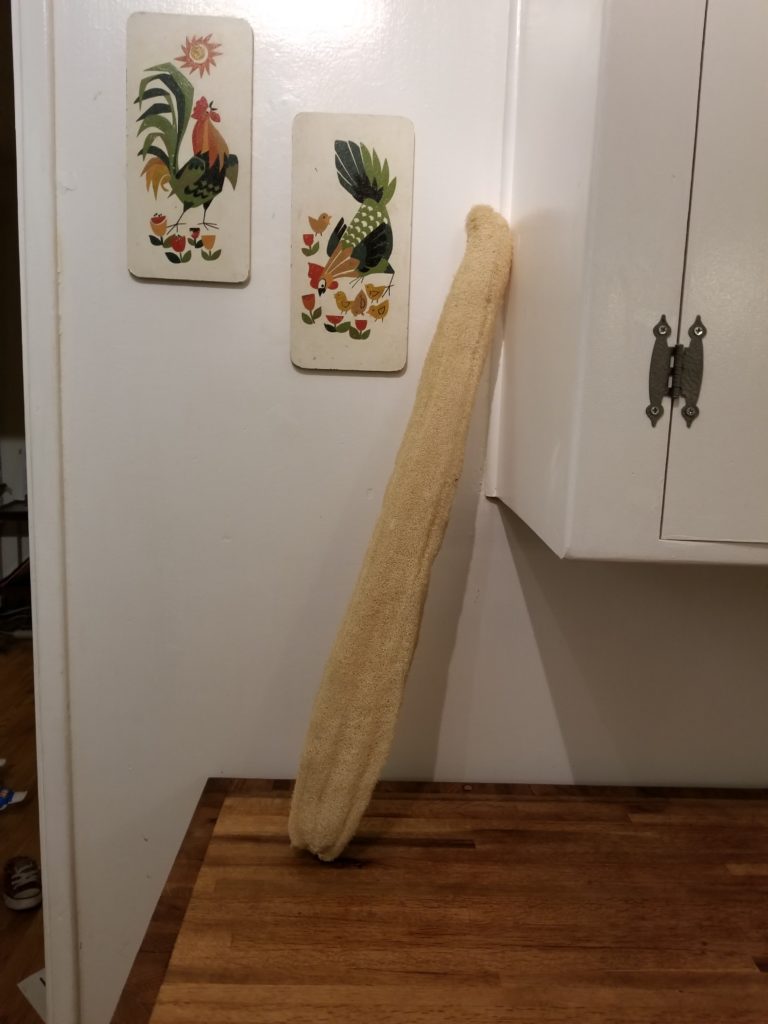I teach gardening education at a LAUSD school, and although everyone means well and wants to help, I’ve only had 2 parents volunteer. I think part of the challenge lies in wanting to help but not knowing how to get there. For instance, composting, where to start? we know where we need to end up but starting the collection and changing behavior is a completely different beast. It’s even harder when not all folks have the same desired goal to get it going – priorities are just different for some folks, unfortunately.
This week felt like a big win. I recently started the master gardener program and have been connecting with great people from different organizations. I came across Seeds of Hope and they work with other non-profits to get food into the hands of those who need it. Please check them out, they also grow their own food to supplement what they give out.
So back to organizing a campus… we set up a disassembly line at the lunch break. Breaking out food that is in good condition and can be donated, recyclable items, compost and waste. Previously, we trashed everything – now we are collecting the compostable food trays (which can also be recycled).
I asked the lunch manager for some help with ice, unfortunately we didn’t have any but he did me a true solid and handed me an insulated bag for food. I drove to Echo Park to drop it off and the group kindly accepted my donation. It would be nice to have a system to drop off the food. I must admit I cried from the sheer exhaustion of getting 10 people to work together in training kids. I hope this is the first of many days when we get to reduce food from the landfill into the hands of those who need it the most.
